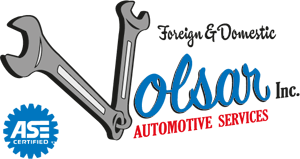WHAT SHOCKS DO
Despite what many people think, conventional shock absorbers do not support vehicle weight. Instead, the primary purpose of the shock absorber is to control spring and suspension movement. This is accomplished by turning the kinetic energy of suspension movement into thermal energy, or heat energy, to be dissipated through the hydraulic fluid.
Shock absorbers are basically oil pumps. A piston is attached to the end of the piston rod and works against hydraulic fluid in the pressure tube. As the suspension travels up and down, the hydraulic fluid is forced through tiny holes, called orifices, inside the piston. However, these orifices let only a small amount of fluid through the piston. This slows down the piston, which in turn slows down spring and suspension movement.
The amount of resistance a shock absorber develops depends on the speed of the suspension and the number and size of the orifices in the piston. All modern shock absorbers are velocity sensitive hydraulic damping devices – meaning the faster the suspension moves, the more resistance the shock absorber provides. Because of this feature, shock absorbers adjust to road conditions. As a result, shock absorbers reduce the rate of:
- Bounce
- Roll or sway
- Brake dive and Acceleration squat
Shock absorbers work on the principle of fluid displacement on both the compression and extension cycle. A typical car or light truck will have more resistance during its extension cycle then its compression cycle. The compression cycle controls the motion of a vehicle’s unsprung weight, while extension controls the heavier sprung weight.
STRUTS
The strut is a common damper type used on many of today’s independent suspension, front wheel drive vehicles as well as some rear wheel drive vehicles.
A strut is a major structural part of a suspension. It takes the place of the upper control arm and upper ball joint used in conventional suspensions. Because of its design, a strut is lighter and takes up less space than the shock absorbers in conventional suspension systems. Struts perform two main jobs. First, struts perform a damping function like shock absorbers. Internally, a strut is similar to a shock absorber. A piston is attached to the end of the piston rod and works against hydraulic fluid to control spring and suspension movement. Just like shock absorbers, the valving generates resistance to forces created by the up and down motion of the suspension. Also like shock absorbers, a strut is velocity sensitive, meaning that it is valved so that the amount of resistance can increase or decrease depending on how fast the suspension moves.
Struts also perform a second job. Unlike shock absorbers, struts provide structural support for the vehicle suspension, support the spring, and hold the tire in an aligned position. Additionally, they bear much of the side load placed on the vehicle’s suspension. As a result, struts affect riding comfort and handling as well as vehicle control, braking, steering, wheel alignment and wear on other suspension
STRUT COMPONENTS
